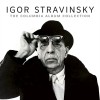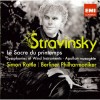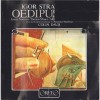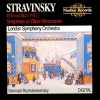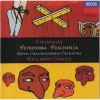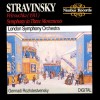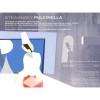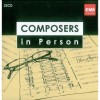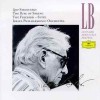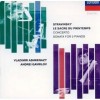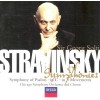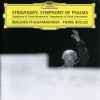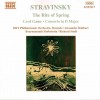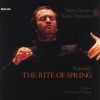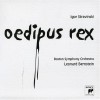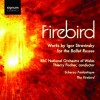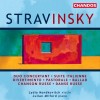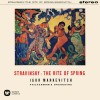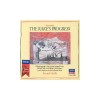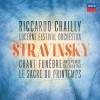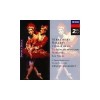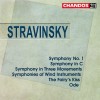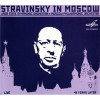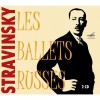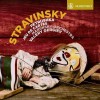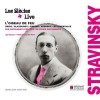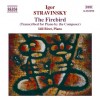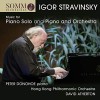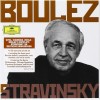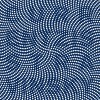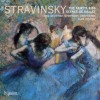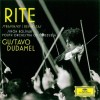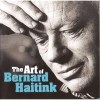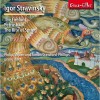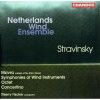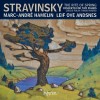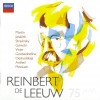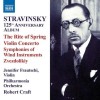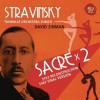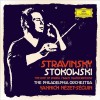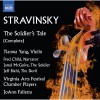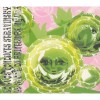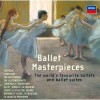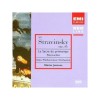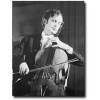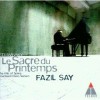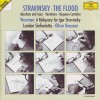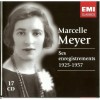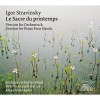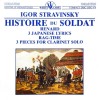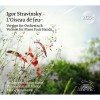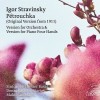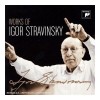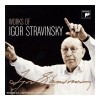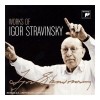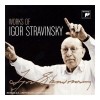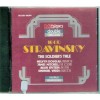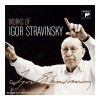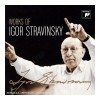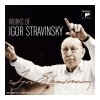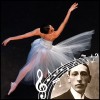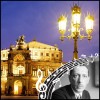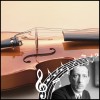Composers
Russia
Stravinsky was born in Oranienbaum (renamed Lomonosov in 1948), Russia and brought up in Saint Petersburg. His childhood, he recalled in his autobiography, was troubled: "I never came across anyone who had any real affection for me." His father, Fyodor Stravinsky, was a bass singer at the Mariinsky Theater in Saint Petersburg and the young Stravinsky began piano lessons and later studied music theory and attempted some composition. In 1890, Stravinsky saw a performance of Tchaikovsky's ballet The Sleeping Beauty at the Mariinsky Theater; the performance, his first exposure to an orchestra, mesmerized him. At fourteen, he had mastered Mendelssohn's Piano Concerto in G minor, and the next year, he finished a piano reduction of one of Alexander Glazunov's string quartets.
Despite his enthusiasm for music, his parents expected him to become a lawyer. Stravinsky enrolled to study law at the University of Saint Petersburg in 1901, but was ill-suited for it, attending fewer than fifty class sessions in four years. After the death of his father in 1902, he had already begun spending more time on his musical studies. Because of the closure of the university in the spring of 1905, in the aftermath of Bloody Sunday, Stravinsky was prevented from taking his law finals, and received only a half-course diploma, in April 1906. Thereafter, he concentrated on music. On the advice of Nikolai Rimsky-Korsakov, probably the leading Russian composer of the time, he decided not to enter the Saint Petersburg Conservatoire; instead, in 1905, he began to take twice-weekly private tutelage from Rimsky-Korsakov, who became like a second father to him. These lessons continued until 1908.
In 1905 he was betrothed to his cousin Katerina Nossenko, whom he had known since early childhood. They were married on 23 January 1906, and their first two children, Fyodor and Ludmilla, were born in 1907 and 1908 respectively.
In 1909, his Feu d'artifice (Fireworks), was performed in Saint Petersburg, where it was heard by Sergei Diaghilev, the director of the Ballets Russes in Paris. Diaghilev was sufficiently impressed to commission Stravinsky to carry out some orchestrations, and then to compose a full-length ballet score, The Firebird.
Switzerland
Stravinsky travelled to Paris in 1910 to attend the premiere of The Firebird. His family soon joined him, and decided to remain in the West for a time. He moved to Switzerland, where he lived until 1920 in Clarens and Lausanne. During this time he composed three further works for the Ballets Russes—Petrushka (1911), written in Lausanne, and The Rite of Spring (1913) and Pulcinella, both written in Clarens.
While the Stravinskys were in Switzerland, their second son, Soulima (who later became a minor composer), was born in 1910; and their second daughter, Maria Milena, was born in 1913. During this last pregnancy, Katerina was found to have tuberculosis, and she was placed in a Swiss sanatorium for her confinement. After a brief return to Russia in July 1914 to collect research materials for Les Noces, Stravinsky left his homeland and returned to Switzerland just before the outbreak of World War I brought about the closure of the borders. He was not to return to Russia for nearly fifty years. Stravinsky was one of the few Eastern Orthodox or Russian Orthodox community representatives living in Switzerland at that time and is still remembered as such in Switzerland to date.
He had a significant artistic relationship with the Swiss philanthropist Werner Reinhart. He approached Reinhart for financial assistance when he was writing Histoire du soldat (The Soldier’s Tale). The first performance was conducted by Ernest Ansermet on 28 September 1918, at the Theatre Municipal de Lausanne. Werner Reinhart sponsored and to a large degree underwrote this performance. In gratitude, Stravinsky dedicated the work to Reinhart, and even gave him the original manuscript. Reinhart continued his support of Stravinsky's work in 1919 by funding a series of concerts of his recent chamber music. These included a suite of five numbers from The Soldier's Tale, arranged for clarinet, violin, and piano, which was a nod to Reinhart, who was an excellent amateur clarinettist. The suite was first performed on 8 November 1919, in Lausanne, long before the better-known suite for the seven original instruments became widely known. In gratitude for Reinhart’s ongoing support, Stravinsky dedicated his Three Pieces for Clarinet (composed October–November 1918) to Reinhart. Reinhart later founded a music library of Stravinskiana at his home in Winterthur.
France
Stravinsky moved to France in 1920, where he formed a business and musical relationship with the French piano manufacturer Pleyel. Pleyel essentially acted as his agent in collecting mechanical royalties for his works, and in return provided him with a monthly income and a studio space in which to work and to entertain friends and business acquaintances.
Stravinsky also arranged (and to some extent re-composed) many of his early works for the Pleyela, Pleyel's brand of player piano. Stravinsky did so in a way that made full use of the piano's 88 notes, without regard for the number or span of human fingers and hands. These were not recorded rolls, but were instead marked up from a combination of manuscript fragments and handwritten notes by the French musician, Jacques Larmanjat (musical director of Pleyel's roll department). While many of these works are now part of the standard repertoire, at the time many orchestras found his music beyond their capabilities and unfathomable. Major compositions issued on Pleyela piano rolls include The Rite of Spring, Petrushka, Firebird, Les Noces and Song of the Nightingale. During the 1920s he also recorded Duo-Art rolls for the Aeolian Company in both London and New York, not all of which survive.
After a short stay near Paris, Stravinsky moved with his family to the south of France. He returned to Paris in 1934, to live at the rue Faubourg-St. Honoré. Stravinsky later remembered this as his last and unhappiest European address; his wife's tuberculosis infected his eldest daughter Ludmila, and Stravinsky himself. Ludmila died in 1938, Katerina in the following year. Stravinsky spent five months in hospital, during which time his mother also died.
Although his marriage to Katerina endured for 33 years, the true love of his life, and later his partner until his death, was the woman who became his second wife Vera de Bosset (1888–1982). When Stravinsky met Vera in Paris in February 1921, she was married to the painter and stage designer Serge Sudeikin; however, they soon began an affair which led to her leaving her husband. From then until Katerina's death from cancer in 1939, Stravinsky led a double life, spending some of his time with his first family and the rest with Vera. Katerina soon learned of the relationship and accepted it as inevitable and permanent.
During his latter years in Paris, Stravinsky had developed professional relationships with key people in the United States; he was already working on the Symphony in C for the Chicago Symphony Orchestra, and had agreed to lecture at Harvard during the academic year of 1939–40. When World War II broke out in September 1939, Stravinsky moved to the United States. Vera followed him early in the next year and they were married in Bedford, MA, USA, on 9 March 1940.
America
Stravinsky settled down in the Los Angeles area (1260 North Wetherly Drive, West Hollywood) where, in the end, he spent more time as a resident than any other city during his lifetime. He became a naturalized citizen in 1946. Stravinsky had adapted to life in France, but moving to America at the age of 58 was a very different prospect. For a time, he preserved a ring of emigré Russian friends and contacts, but eventually found that this did not sustain his intellectual and professional life. He was drawn to the growing cultural life of Los Angeles, especially during World War II, when so many writers, musicians, composers, and conductors settled in the area; these included Otto Klemperer, Thomas Mann, Franz Werfel, George Balanchine and Arthur Rubinstein. He lived fairly near to Arnold Schoenberg, though he did not have a close relationship with him. Bernard Holland notes that he was especially fond of British writers who often visited him in Beverly Hills, "like W. H. Auden, Christopher Isherwood, Dylan Thomas (who shared the composer's taste for hard spirits) and, especially, Aldous Huxley, with whom Stravinsky spoke in French." He settled into life in Los Angeles and sometimes conducted concerts with the Los Angeles Philharmonic at the famous Hollywood Bowl as well as throughout the U.S. When he planned to write an opera with W. H. Auden, the need to acquire more familiarity with the English-speaking world coincided with his meeting the conductor and musicologist Robert Craft. Craft lived with Stravinsky until the composer's death, acting as interpreter, chronicler, assistant conductor, and factotum for countless musical and social tasks.
On April 15, 1940, Stravinsky's unconventional major seventh chord in his arrangement of the Star-Spangled Banner led to his arrest by the Boston police for violating a federal law that prohibited the reharmonization of the National Anthem.
In 1959, Stravinsky was awarded the Sonning Award, Denmark's highest musical honour. In 1962, he accepted an invitation to return to Leningrad (today known as Saint Petersburg) for a series of concerts. He spent more than two hours speaking with Soviet leader Nikita Khrushchev, who urged him to return to the Soviet Union.[citation needed] Despite the invitation, Stravinsky remained settled in the West.
It was during the 1960's that Stravinsky became mentor for Warren Zevon. Zevon occasionally studied Classical music in Stravinsky's home.
In 1969, he moved to New York where he lived his last years at the Essex House. Two years later, he died at the age of 88 in New York City and was buried in Venice on the cemetery island of San Michele. His grave is close to the tomb of his long-time collaborator Sergei Diaghilev. Stravinsky's professional life had encompassed most of the 20th century, including many of its modern classical music styles, and he influenced composers both during and after his lifetime. He has a star on the Hollywood Walk of Fame at 6340 Hollywood Boulevard and posthumously received the Grammy Award for Lifetime Achievement in 1987.
Personality
Stravinsky displayed an inexhaustible desire to explore and learn about art, literature, and life. This desire manifested itself in several of his Paris collaborations. Not only was he the principal composer for Sergei Diaghilev's Ballets Russes, but he also collaborated with Pablo Picasso (Pulcinella, 1920), Jean Cocteau (Oedipus Rex, 1927) and George Balanchine (Apollon musagète, 1928). His taste in literature was wide, and reflected his constant desire for new discoveries. The texts and literary sources for his work began with a period of interest in Russian folklore, progressed to classical authors and the Latin liturgy, and moved on to contemporary France (André Gide, in Persephone) and eventually English literature, including Auden, T. S. Eliot and medieval English verse. At the end of his life, he set Hebrew scripture in Abraham and Isaac.
Stravinsky and Pablo Picasso collaborated on Pulcinella in 1920. Picasso took the opportunity to make several sketches of the composer.
Patronage was never far away. In the early 1920s, Leopold Stokowski gave Stravinsky regular support through a pseudonymous "benefactor". The composer was also able to attract commissions: most of his work from The Firebird onwards was written for specific occasions and was paid for generously.
Stravinsky proved adept at playing the part of "man of the world", acquiring a keen instinct for business matters and appearing relaxed and comfortable in many of the world's major cities. Paris, Venice, Berlin, London, Amsterdam and New York City all hosted successful appearances as pianist and conductor. Most people who knew him through dealings connected with performances spoke of him as polite, courteous and helpful. For example, Otto Klemperer, who knew Arnold Schoenberg well, said that he always found Stravinsky much more co-operative and easy to deal with. At the same time, he had a marked disregard for those he perceived to be his social inferiors: Robert Craft was embarrassed by his habit of tapping a glass with a fork and loudly demanding attention in restaurants.
Although a notorious philanderer (who was rumoured to have affairs with high-profile partners such as Coco Chanel), Stravinsky was also a family man who devoted considerable amounts of his time and expenditure to his sons and daughters.
Stravinsky was also a devout member of the Russian Orthodox Church all throughout his life, remarking at one time, "Music praises God. Music is well or better able to praise him than the building of the church and all its decoration; it is the Church's greatest ornament."
Stylistic periods
'Russian' Period (circa 1908–1919)
The first period (excluding some early minor works) began with Feu d'artifice and achieved prominence with the three ballets composed for Diaghilev. These three works have several characteristics in common: they are scored for an extremely large orchestra; they use Russian folk themes and motifs; and they are influenced by Rimsky-Korsakov's imaginative scoring and instrumentation. They also exhibit considerable stylistic development: from the L'oiseau de feu, which emphasizes certain tendencies in Rimsky-Korsakov and features pandiatonicism conspicuously in the third movement, to the use of polytonality in Petrushka, and the intentionally brutal polyrhythms and dissonances of Le Sacre du printemps.
The first of the ballets, L'Oiseau de feu, is noted for its imaginative orchestration, evident at the outset from the introduction in 12/8 meter, which exploits the low register of the double bass. Petrushka, the first of Stravinsky's ballets to draw on folk mythology, is also distinctively scored. In the third ballet, The Rite of Spring, the composer attempted to depict musically the brutality of pagan Russia, which inspired the violent motifs that recur throughout the work. To this day its vision of pagan rituals, enacted in an imaginary ancient Russia continues to dazzle and overwhelm audiences. Once again, Stravinsky's originality is evident: the opening theme, played on a bassoon at the very top of its register, has become one of the most famous passages in Western art music, as has the pulsing syncopated eighth-note motif in the strings, its accents marked by horn.
If Stravinsky's stated intention was "to send them all to hell", then he may have rated the 1913 premiere of Le sacre du printemps as a success: it is among the most famous classical music riots, and Stravinsky referred to it frequently as a "scandale" in his autobiography. There were reports of fistfights among the audience, and the need for a police presence during the second act. The real extent of the tumult, however, is open to debate, and these reports may be apocryphal.
Stravinsky later commented about the première of The Rite: "As for the actual performance, I am not in a position to judge, as I left the auditorium at the first bars of the prelude, which had at once evoked derisive laughter. I was disgusted. These demonstrations, at first isolated, soon became general, provoking counter-demonstrations and very quickly developing into a terrific uproar. During the whole performance I was at Nijinsky's side in the wings. He was standing on a chair, screaming 'Sixteen, seventeen, eighteen'—they had their own method of counting to keep time. Naturally the poor dancers could hear nothing by reason of the row in the auditorium and the sound of their own dance-steps. I had to hold Nijinsky by his clothes, for he was furious, and ready to dash on to the stage at any moment and create a scandal. Diaghilev kept ordering the electricians to turn the lights on or off, hoping in that way to put a stop to the noise. That is all I can remember about that first performance."
Other pieces from this period include: Le Rossignol (The Nightingale); Renard (1916); Histoire du soldat (The Soldier's Tale) (1918); and Les Noces (The Wedding) (1923).
Neoclassical Period (circa 1920–1954)
The next phase of Stravinsky's compositional style extended from roughly 1920, when he adopted a musical idiom similar to that of the Classical period, until 1954, when he turned to twelve-tone serialism. Pulcinella (1920) and the Octet (1923) for wind instruments are Stravinsky's first compositions to feature his re-examination of the classical music of Mozart and Bach and their contemporaries. For this "neo-classical" style Stravinsky abandoned the large orchestras demanded by the ballets, and turned instead largely to wind instruments, the piano, and choral and chamber works.
Other works such as Oedipus Rex (1927), Apollon musagète (1928, for the Russian Ballet) and the Dumbarton Oaks Concerto (1937–38) continued this re-thinking of eighteenth-century musical styles.
Works from this period include the three symphonies: the Symphonie des Psaumes (Symphony of Psalms) (1930), Symphony in C (1940) and Symphony in Three Movements (1945). Apollon, Persephone (1933) and Orpheus (1947) exemplify not only Stravinsky's return to music of the Classical period, but also his exploration of themes from the ancient Classical world such as Greek mythology.
Stravinsky completed his last neo-classical work, the opera The Rake's Progress, in 1951, to a libretto by W. H. Auden based on the etchings of Hogarth. It was almost ignored[citation needed] after it was staged by the Metropolitan Opera in 1953. It was presented by the Santa Fe Opera in its first season in 1957 with Stravinsky in attendance, and this marked the beginning of his long association with the company. The music is direct but quirky; it borrows from classic tonal harmony but also interjects surprising dissonances; it features Stravinsky's trademark off-rhythms; and it harks back to the operas and themes of Monteverdi, Gluck and Mozart. The opera was revived by the Metropolitan Opera in 1997.
Serial Period (1954–1968)
Stravinsky began using serial compositional techniques, including dodecaphony, the twelve-tone technique originally devised by Arnold Schoenberg, in the early 1950s (after Schoenberg's death). Robert Craft encouraged this undertaking.
He first experimented with non-twelve-tone serial technique in small-scale vocal and chamber works such as the Cantata (1952), Septet (1953), and Three Songs from Shakespeare (1953), and his first composition to be fully based on these non-twelve-tone serial techniques is In Memoriam Dylan Thomas (1954). Agon (1954–57) is his first work to include a twelve-tone series, and Canticum Sacrum (1955) is his first piece to contain a movement entirely based on a tone row ("Surge, aquilo"). Stravinsky later expanded his use of dodecaphony in works including Threni (1958), A Sermon, a Narrative, and a Prayer (1961), and The Flood (1962), which are based on biblical texts.
Agon, written from 1954 to 1957, is a ballet choreographed for twelve dancers. It is an important transitional composition between Stravinsky's neo-classical period and his serial style. Some numbers of Agon are reminiscent of the "white-note" tonality of his neo-classic period, while others (for example Bransle Gay) display his re-interpretation of serial methods.
Innovation and influence
The All Music Guide (AMG) claims that Stravinsky was "one of music's truly epochal innovators". The most important aspect of Stravinsky's work aside from his technical innovations, including in rhythm and harmony, is the, "changing face," of his compositional style while always "retaining a distinctive, essential identity". He himself was inspired by different cultures, languages and literatures. As a consequence, his influence on composers both during his lifetime and after his death was, and remains, considerable.
Composition
Stravinsky's use of motivic development (the use of musical figures that are repeated in different guises throughout a composition or section of a composition) included additive motivic development. This is where notes are subtracted or added to a motif without regard to the consequent changes in meter. A similar technique may be found as early as the sixteenth century, for example in the music of Cipriano de Rore, Orlandus Lassus, Carlo Gesualdo, and Giovanni de Macque, music with which Stravinsky exhibited considerable familiarity.
The Rite of Spring is also notable for its relentless use of ostinati; for example, in the eighth note ostinato on strings accented by eight horns in the section Augurs of Spring (Dances of the Young Girls). The work also contains passages where several ostinati clash against one another.
Rhythm
Stravinsky was noted for his distinctive use of rhythm, especially in The Rite of Spring.
According to Philip Glass:
the idea of pushing the rhythms across the bar lines led the way the rhythmic structure of music became much more fluid and in a certain way spontaneous
Glass also praises Stravinsky's "primitive, offbeat rhythmic drive".
According to Andrew J. Browne, "Stravinsky is perhaps the only composer who has raised rhythm in itself to the dignity of art."
Stravinsky's rhythm and vitality greatly influenced composer Aaron Copland.
Neoclassicism
Stravinsky's first neo-classical works were the ballet Pulcinella of 1920, and the stripped-down and delicately scored Octet for winds of 1923. Stravinsky may have been preceded in his use of neoclassical devices by earlier composers such as Erik Satie. By the late 1920s and 1930s, the use by composers of neoclassicism had become widespread.
Quotation
Stravinsky continued a long tradition, stretching back at least to the fifteenth century in the form of the quodlibet and parody mass, by composing pieces which elaborate on individual works by earlier composers. An early example of this is his Pulcinella of 1920, in which he used music which at the time was attributed to Giovanni Pergolesi as source material, at times quoting it directly and at other times reinventing it. He developed the technique further in the ballet The Fairy's Kiss of 1928, based on the music—mostly piano pieces—of Tchaikovsky. Later examples of comparable musical transformations include Stravinsky's use of Schubert in Circus Polka (1942) and Happy Birthday to You in Greeting Prelude (1955).
Folk material
In Le Sacre du Printemps Stravinsky stripped folk themes to their most basic melodic outlines, and often contorted them beyond recognition with added notes, and other techniques including inversion and diminution.
Orchestra
Like many of the late romantic composers, Stravinsky often called for huge orchestral forces, especially in the early ballets. His first breakthrough The Firebird proved him the equal of Nikolai Rimsky-Korsakov and lit the "fuse under the instrumental make up of the 19th century orchestra". In The Firebird he took the orchestra apart and analyzed it. The Rite of Spring on the other hand has been characterized by Aaron Copland as the foremost orchestral achievement in 20th century.
Stravinsky also wrote for unique combinations of instruments in smaller ensembles, chosen for their precise tone colours. For example, Histoire du soldat (The Soldier's Tale) is scored for clarinet, bassoon, cornet, trombone, violin, double bass and percussion, a strikingly unusual combination for 1918.
Stravinsky occasionally exploited the extreme ranges of instruments, most famously at the opening of the Rite of Spring where Stravinsky uses the extreme upper reaches of the bassoon to simulate the symbolic "awakening" of a spring morning.
Reception
Erik Satie wrote an article about Igor Stravinsky that was published in Vanity Fair (1922). Satie had met Stravinsky for the first time in 1910. Satie's attitude towards the Russian composer is marked by deference, as can be seen from the letters he wrote him in 1922, preparing for the Vanity Fair article. With a touch of irony, he concluded one of these letters "I admire you: are you not the Great Stravinsky? I am but little Erik Satie." In the published article, Satie argued that measuring the "greatness" of an artist by comparing him to other artists, as if speaking about some "truth", is illusory: every piece of music should be judged on its own merits, not by comparing it to the standards of other composers. That was exactly what Jean Cocteau had done, when commenting deprecatingly on Stravinsky in his 1918 book Le Coq et l'Arlequin.
According to the Musical Times in 1923:
All the signs indicate a strong reaction against the nightmare of noise and eccentricity that was one of the legacies of the war.... What has become of the works that made up the program of the Stravinsky concert which created such a stir a few years ago? Practically the whole lot are already on the shelf, and they will remain there until a few jaded neurotics once more feel a desire to eat ashes and fill their belly with the east wind.
In 1935, American composer Marc Blitzstein compared Stravinsky to Jacopo Peri and C. P. E. Bach, conceding that "There is no denying the greatness of Stravinsky. It is just that he is not great enough". Blitzstein's Marxist position is that Stravinsky's wish was to "divorce music from other streams of life," which is "symptomatic of an escape from reality", resulting in a "loss of stamina his new works show", naming specifically Apollo, the Capriccio, and Le Baiser de la fée.
Composer Constant Lambert described pieces such as Histoire du soldat (The Soldier's Tale) as containing "essentially cold-blooded abstraction". Lambert continued, "melodic fragments in Histoire du Soldat are completely meaningless themselves. They are merely successions of notes that can conveniently be divided into groups of three, five, and seven and set against other mathematical groups", and he described the cadenza for solo drums as "musical purity...achieved by a species of musical castration". He compared Stravinsky's choice of "the drabbest and least significant phrases" to Gertrude Stein's: "Everyday they were gay there, they were regularly gay there everyday" ("Helen Furr and Georgine Skeene", 1922), "whose effect would be equally appreciated by someone with no knowledge of English whatsoever".
In his book Philosophy of Modern Music (1949), Theodor Adorno called Stravinsky an acrobat and spoke of hebephrenic and psychotic traits in several of Stravinsky's works. Contrary to a common misconception, however, Adorno didn't think that the hebephrenic and psychotic imitations Stravinsky's music was supposed to contain were its main fault, as he clearly pointed out in a postscriptum added later to his "Philosophy": Adorno's criticism of Stravinsky is more concerned with the "turn into the positive" Stravinsky's music took (according to Adorno) in his neoclassical works. Part of the composer's error, in Adorno's view, was his neo-classicism, but more important was his music's "pseudomorphism of painting," playing off le temps espace (time-space) rather than le temps durée (time-duration) of Henri Bergson. "One trick characterizes all of Stravinsky's formal endeavors: the effort of his music to portray time as in a circus tableau and to present time complexes as though they were spatial. This trick, however, soon exhausts itself." His "rhythmic procedures closely resemble the schema of catatonic conditions. In certain schizophrenics, the process by which the motor apparatus becomes independent leads to infinite repetition of gestures or words, following the decay of the ego."
Stravinsky's reception in Russia and the USSR went back and forth. Performances of his music stopped from around 1933 until the early 1960s, at which point the official position became that one must appreciate Stravinsky.
According to Paul Griffiths, The Rake's Progress "gives justification in terms of human psychology, and of the realities of the world, for that obsessional need to repeat and return".
While Stravinsky's music has been criticized for its range of styles scholars had, "gradually begun to perceive unifying elements in Stravinsky's music," by the 1980s including a, "'seriousness' of 'tone' or of 'purpose'".
Recently Added
Biography
Russia
Stravinsky was born in Oranienbaum (renamed Lomonosov in 1948), Russia and brought up in Saint Petersburg. His childhood, he recalled in his autobiography, was troubled: "I never came across anyone who had any real affection for me." His father, Fyodor Stravinsky, was a bass singer at the Mariinsky Theater in Saint Petersburg and the young Stravinsky began piano lessons and later studied music theory and attempted some composition. In 1890, Stravinsky saw a performance of Tchaikovsky's ballet The Sleeping Beauty at the Mariinsky Theater; the performance, his first exposure to an orchestra, mesmerized him. At fourteen, he had mastered Mendelssohn's Piano Concerto in G minor, and the next year, he finished a piano reduction of one of Alexander Glazunov's string quartets.
Despite his enthusiasm for music, his parents expected him to become a lawyer. Stravinsky enrolled to study law at the University of Saint Petersburg in 1901, but was ill-suited for it, attending fewer than fifty class sessions in four years. After the death of his father in 1902, he had already begun spending more time on his musical studies. Because of the closure of the university in the spring of 1905, in the aftermath of Bloody Sunday, Stravinsky was prevented from taking his law finals, and received only a half-course diploma, in April 1906. Thereafter, he concentrated on music. On the advice of Nikolai Rimsky-Korsakov, probably the leading Russian composer of the time, he decided not to enter the Saint Petersburg Conservatoire; instead, in 1905, he began to take twice-weekly private tutelage from Rimsky-Korsakov, who became like a second father to him. These lessons continued until 1908.
In 1905 he was betrothed to his cousin Katerina Nossenko, whom he had known since early childhood. They were married on 23 January 1906, and their first two children, Fyodor and Ludmilla, were born in 1907 and 1908 respectively.
In 1909, his Feu d'artifice (Fireworks), was performed in Saint Petersburg, where it was heard by Sergei Diaghilev, the director of the Ballets Russes in Paris. Diaghilev was sufficiently impressed to commission Stravinsky to carry out some orchestrations, and then to compose a full-length ballet score, The Firebird.
Switzerland
Stravinsky travelled to Paris in 1910 to attend the premiere of The Firebird. His family soon joined him, and decided to remain in the West for a time. He moved to Switzerland, where he lived until 1920 in Clarens and Lausanne. During this time he composed three further works for the Ballets Russes—Petrushka (1911), written in Lausanne, and The Rite of Spring (1913) and Pulcinella, both written in Clarens.
While the Stravinskys were in Switzerland, their second son, Soulima (who later became a minor composer), was born in 1910; and their second daughter, Maria Milena, was born in 1913. During this last pregnancy, Katerina was found to have tuberculosis, and she was placed in a Swiss sanatorium for her confinement. After a brief return to Russia in July 1914 to collect research materials for Les Noces, Stravinsky left his homeland and returned to Switzerland just before the outbreak of World War I brought about the closure of the borders. He was not to return to Russia for nearly fifty years. Stravinsky was one of the few Eastern Orthodox or Russian Orthodox community representatives living in Switzerland at that time and is still remembered as such in Switzerland to date.
He had a significant artistic relationship with the Swiss philanthropist Werner Reinhart. He approached Reinhart for financial assistance when he was writing Histoire du soldat (The Soldier’s Tale). The first performance was conducted by Ernest Ansermet on 28 September 1918, at the Theatre Municipal de Lausanne. Werner Reinhart sponsored and to a large degree underwrote this performance. In gratitude, Stravinsky dedicated the work to Reinhart, and even gave him the original manuscript. Reinhart continued his support of Stravinsky's work in 1919 by funding a series of concerts of his recent chamber music. These included a suite of five numbers from The Soldier's Tale, arranged for clarinet, violin, and piano, which was a nod to Reinhart, who was an excellent amateur clarinettist. The suite was first performed on 8 November 1919, in Lausanne, long before the better-known suite for the seven original instruments became widely known. In gratitude for Reinhart’s ongoing support, Stravinsky dedicated his Three Pieces for Clarinet (composed October–November 1918) to Reinhart. Reinhart later founded a music library of Stravinskiana at his home in Winterthur.
France
Stravinsky moved to France in 1920, where he formed a business and musical relationship with the French piano manufacturer Pleyel. Pleyel essentially acted as his agent in collecting mechanical royalties for his works, and in return provided him with a monthly income and a studio space in which to work and to entertain friends and business acquaintances.
Stravinsky also arranged (and to some extent re-composed) many of his early works for the Pleyela, Pleyel's brand of player piano. Stravinsky did so in a way that made full use of the piano's 88 notes, without regard for the number or span of human fingers and hands. These were not recorded rolls, but were instead marked up from a combination of manuscript fragments and handwritten notes by the French musician, Jacques Larmanjat (musical director of Pleyel's roll department). While many of these works are now part of the standard repertoire, at the time many orchestras found his music beyond their capabilities and unfathomable. Major compositions issued on Pleyela piano rolls include The Rite of Spring, Petrushka, Firebird, Les Noces and Song of the Nightingale. During the 1920s he also recorded Duo-Art rolls for the Aeolian Company in both London and New York, not all of which survive.
After a short stay near Paris, Stravinsky moved with his family to the south of France. He returned to Paris in 1934, to live at the rue Faubourg-St. Honoré. Stravinsky later remembered this as his last and unhappiest European address; his wife's tuberculosis infected his eldest daughter Ludmila, and Stravinsky himself. Ludmila died in 1938, Katerina in the following year. Stravinsky spent five months in hospital, during which time his mother also died.
Although his marriage to Katerina endured for 33 years, the true love of his life, and later his partner until his death, was the woman who became his second wife Vera de Bosset (1888–1982). When Stravinsky met Vera in Paris in February 1921, she was married to the painter and stage designer Serge Sudeikin; however, they soon began an affair which led to her leaving her husband. From then until Katerina's death from cancer in 1939, Stravinsky led a double life, spending some of his time with his first family and the rest with Vera. Katerina soon learned of the relationship and accepted it as inevitable and permanent.
During his latter years in Paris, Stravinsky had developed professional relationships with key people in the United States; he was already working on the Symphony in C for the Chicago Symphony Orchestra, and had agreed to lecture at Harvard during the academic year of 1939–40. When World War II broke out in September 1939, Stravinsky moved to the United States. Vera followed him early in the next year and they were married in Bedford, MA, USA, on 9 March 1940.
America
Stravinsky settled down in the Los Angeles area (1260 North Wetherly Drive, West Hollywood) where, in the end, he spent more time as a resident than any other city during his lifetime. He became a naturalized citizen in 1946. Stravinsky had adapted to life in France, but moving to America at the age of 58 was a very different prospect. For a time, he preserved a ring of emigré Russian friends and contacts, but eventually found that this did not sustain his intellectual and professional life. He was drawn to the growing cultural life of Los Angeles, especially during World War II, when so many writers, musicians, composers, and conductors settled in the area; these included Otto Klemperer, Thomas Mann, Franz Werfel, George Balanchine and Arthur Rubinstein. He lived fairly near to Arnold Schoenberg, though he did not have a close relationship with him. Bernard Holland notes that he was especially fond of British writers who often visited him in Beverly Hills, "like W. H. Auden, Christopher Isherwood, Dylan Thomas (who shared the composer's taste for hard spirits) and, especially, Aldous Huxley, with whom Stravinsky spoke in French." He settled into life in Los Angeles and sometimes conducted concerts with the Los Angeles Philharmonic at the famous Hollywood Bowl as well as throughout the U.S. When he planned to write an opera with W. H. Auden, the need to acquire more familiarity with the English-speaking world coincided with his meeting the conductor and musicologist Robert Craft. Craft lived with Stravinsky until the composer's death, acting as interpreter, chronicler, assistant conductor, and factotum for countless musical and social tasks.
On April 15, 1940, Stravinsky's unconventional major seventh chord in his arrangement of the Star-Spangled Banner led to his arrest by the Boston police for violating a federal law that prohibited the reharmonization of the National Anthem.
In 1959, Stravinsky was awarded the Sonning Award, Denmark's highest musical honour. In 1962, he accepted an invitation to return to Leningrad (today known as Saint Petersburg) for a series of concerts. He spent more than two hours speaking with Soviet leader Nikita Khrushchev, who urged him to return to the Soviet Union.[citation needed] Despite the invitation, Stravinsky remained settled in the West.
It was during the 1960's that Stravinsky became mentor for Warren Zevon. Zevon occasionally studied Classical music in Stravinsky's home.
In 1969, he moved to New York where he lived his last years at the Essex House. Two years later, he died at the age of 88 in New York City and was buried in Venice on the cemetery island of San Michele. His grave is close to the tomb of his long-time collaborator Sergei Diaghilev. Stravinsky's professional life had encompassed most of the 20th century, including many of its modern classical music styles, and he influenced composers both during and after his lifetime. He has a star on the Hollywood Walk of Fame at 6340 Hollywood Boulevard and posthumously received the Grammy Award for Lifetime Achievement in 1987.
Personality
Stravinsky displayed an inexhaustible desire to explore and learn about art, literature, and life. This desire manifested itself in several of his Paris collaborations. Not only was he the principal composer for Sergei Diaghilev's Ballets Russes, but he also collaborated with Pablo Picasso (Pulcinella, 1920), Jean Cocteau (Oedipus Rex, 1927) and George Balanchine (Apollon musagète, 1928). His taste in literature was wide, and reflected his constant desire for new discoveries. The texts and literary sources for his work began with a period of interest in Russian folklore, progressed to classical authors and the Latin liturgy, and moved on to contemporary France (André Gide, in Persephone) and eventually English literature, including Auden, T. S. Eliot and medieval English verse. At the end of his life, he set Hebrew scripture in Abraham and Isaac.
Stravinsky and Pablo Picasso collaborated on Pulcinella in 1920. Picasso took the opportunity to make several sketches of the composer.
Patronage was never far away. In the early 1920s, Leopold Stokowski gave Stravinsky regular support through a pseudonymous "benefactor". The composer was also able to attract commissions: most of his work from The Firebird onwards was written for specific occasions and was paid for generously.
Stravinsky proved adept at playing the part of "man of the world", acquiring a keen instinct for business matters and appearing relaxed and comfortable in many of the world's major cities. Paris, Venice, Berlin, London, Amsterdam and New York City all hosted successful appearances as pianist and conductor. Most people who knew him through dealings connected with performances spoke of him as polite, courteous and helpful. For example, Otto Klemperer, who knew Arnold Schoenberg well, said that he always found Stravinsky much more co-operative and easy to deal with. At the same time, he had a marked disregard for those he perceived to be his social inferiors: Robert Craft was embarrassed by his habit of tapping a glass with a fork and loudly demanding attention in restaurants.
Although a notorious philanderer (who was rumoured to have affairs with high-profile partners such as Coco Chanel), Stravinsky was also a family man who devoted considerable amounts of his time and expenditure to his sons and daughters.
Stravinsky was also a devout member of the Russian Orthodox Church all throughout his life, remarking at one time, "Music praises God. Music is well or better able to praise him than the building of the church and all its decoration; it is the Church's greatest ornament."
Stylistic periods
'Russian' Period (circa 1908–1919)
The first period (excluding some early minor works) began with Feu d'artifice and achieved prominence with the three ballets composed for Diaghilev. These three works have several characteristics in common: they are scored for an extremely large orchestra; they use Russian folk themes and motifs; and they are influenced by Rimsky-Korsakov's imaginative scoring and instrumentation. They also exhibit considerable stylistic development: from the L'oiseau de feu, which emphasizes certain tendencies in Rimsky-Korsakov and features pandiatonicism conspicuously in the third movement, to the use of polytonality in Petrushka, and the intentionally brutal polyrhythms and dissonances of Le Sacre du printemps.
The first of the ballets, L'Oiseau de feu, is noted for its imaginative orchestration, evident at the outset from the introduction in 12/8 meter, which exploits the low register of the double bass. Petrushka, the first of Stravinsky's ballets to draw on folk mythology, is also distinctively scored. In the third ballet, The Rite of Spring, the composer attempted to depict musically the brutality of pagan Russia, which inspired the violent motifs that recur throughout the work. To this day its vision of pagan rituals, enacted in an imaginary ancient Russia continues to dazzle and overwhelm audiences. Once again, Stravinsky's originality is evident: the opening theme, played on a bassoon at the very top of its register, has become one of the most famous passages in Western art music, as has the pulsing syncopated eighth-note motif in the strings, its accents marked by horn.
If Stravinsky's stated intention was "to send them all to hell", then he may have rated the 1913 premiere of Le sacre du printemps as a success: it is among the most famous classical music riots, and Stravinsky referred to it frequently as a "scandale" in his autobiography. There were reports of fistfights among the audience, and the need for a police presence during the second act. The real extent of the tumult, however, is open to debate, and these reports may be apocryphal.
Stravinsky later commented about the première of The Rite: "As for the actual performance, I am not in a position to judge, as I left the auditorium at the first bars of the prelude, which had at once evoked derisive laughter. I was disgusted. These demonstrations, at first isolated, soon became general, provoking counter-demonstrations and very quickly developing into a terrific uproar. During the whole performance I was at Nijinsky's side in the wings. He was standing on a chair, screaming 'Sixteen, seventeen, eighteen'—they had their own method of counting to keep time. Naturally the poor dancers could hear nothing by reason of the row in the auditorium and the sound of their own dance-steps. I had to hold Nijinsky by his clothes, for he was furious, and ready to dash on to the stage at any moment and create a scandal. Diaghilev kept ordering the electricians to turn the lights on or off, hoping in that way to put a stop to the noise. That is all I can remember about that first performance."
Other pieces from this period include: Le Rossignol (The Nightingale); Renard (1916); Histoire du soldat (The Soldier's Tale) (1918); and Les Noces (The Wedding) (1923).
Neoclassical Period (circa 1920–1954)
The next phase of Stravinsky's compositional style extended from roughly 1920, when he adopted a musical idiom similar to that of the Classical period, until 1954, when he turned to twelve-tone serialism. Pulcinella (1920) and the Octet (1923) for wind instruments are Stravinsky's first compositions to feature his re-examination of the classical music of Mozart and Bach and their contemporaries. For this "neo-classical" style Stravinsky abandoned the large orchestras demanded by the ballets, and turned instead largely to wind instruments, the piano, and choral and chamber works.
Other works such as Oedipus Rex (1927), Apollon musagète (1928, for the Russian Ballet) and the Dumbarton Oaks Concerto (1937–38) continued this re-thinking of eighteenth-century musical styles.
Works from this period include the three symphonies: the Symphonie des Psaumes (Symphony of Psalms) (1930), Symphony in C (1940) and Symphony in Three Movements (1945). Apollon, Persephone (1933) and Orpheus (1947) exemplify not only Stravinsky's return to music of the Classical period, but also his exploration of themes from the ancient Classical world such as Greek mythology.
Stravinsky completed his last neo-classical work, the opera The Rake's Progress, in 1951, to a libretto by W. H. Auden based on the etchings of Hogarth. It was almost ignored[citation needed] after it was staged by the Metropolitan Opera in 1953. It was presented by the Santa Fe Opera in its first season in 1957 with Stravinsky in attendance, and this marked the beginning of his long association with the company. The music is direct but quirky; it borrows from classic tonal harmony but also interjects surprising dissonances; it features Stravinsky's trademark off-rhythms; and it harks back to the operas and themes of Monteverdi, Gluck and Mozart. The opera was revived by the Metropolitan Opera in 1997.
Serial Period (1954–1968)
Stravinsky began using serial compositional techniques, including dodecaphony, the twelve-tone technique originally devised by Arnold Schoenberg, in the early 1950s (after Schoenberg's death). Robert Craft encouraged this undertaking.
He first experimented with non-twelve-tone serial technique in small-scale vocal and chamber works such as the Cantata (1952), Septet (1953), and Three Songs from Shakespeare (1953), and his first composition to be fully based on these non-twelve-tone serial techniques is In Memoriam Dylan Thomas (1954). Agon (1954–57) is his first work to include a twelve-tone series, and Canticum Sacrum (1955) is his first piece to contain a movement entirely based on a tone row ("Surge, aquilo"). Stravinsky later expanded his use of dodecaphony in works including Threni (1958), A Sermon, a Narrative, and a Prayer (1961), and The Flood (1962), which are based on biblical texts.
Agon, written from 1954 to 1957, is a ballet choreographed for twelve dancers. It is an important transitional composition between Stravinsky's neo-classical period and his serial style. Some numbers of Agon are reminiscent of the "white-note" tonality of his neo-classic period, while others (for example Bransle Gay) display his re-interpretation of serial methods.
Innovation and influence
The All Music Guide (AMG) claims that Stravinsky was "one of music's truly epochal innovators". The most important aspect of Stravinsky's work aside from his technical innovations, including in rhythm and harmony, is the, "changing face," of his compositional style while always "retaining a distinctive, essential identity". He himself was inspired by different cultures, languages and literatures. As a consequence, his influence on composers both during his lifetime and after his death was, and remains, considerable.
Composition
Stravinsky's use of motivic development (the use of musical figures that are repeated in different guises throughout a composition or section of a composition) included additive motivic development. This is where notes are subtracted or added to a motif without regard to the consequent changes in meter. A similar technique may be found as early as the sixteenth century, for example in the music of Cipriano de Rore, Orlandus Lassus, Carlo Gesualdo, and Giovanni de Macque, music with which Stravinsky exhibited considerable familiarity.
The Rite of Spring is also notable for its relentless use of ostinati; for example, in the eighth note ostinato on strings accented by eight horns in the section Augurs of Spring (Dances of the Young Girls). The work also contains passages where several ostinati clash against one another.
Rhythm
Stravinsky was noted for his distinctive use of rhythm, especially in The Rite of Spring.
According to Philip Glass:
the idea of pushing the rhythms across the bar lines led the way the rhythmic structure of music became much more fluid and in a certain way spontaneous
Glass also praises Stravinsky's "primitive, offbeat rhythmic drive".
According to Andrew J. Browne, "Stravinsky is perhaps the only composer who has raised rhythm in itself to the dignity of art."
Stravinsky's rhythm and vitality greatly influenced composer Aaron Copland.
Neoclassicism
Stravinsky's first neo-classical works were the ballet Pulcinella of 1920, and the stripped-down and delicately scored Octet for winds of 1923. Stravinsky may have been preceded in his use of neoclassical devices by earlier composers such as Erik Satie. By the late 1920s and 1930s, the use by composers of neoclassicism had become widespread.
Quotation
Stravinsky continued a long tradition, stretching back at least to the fifteenth century in the form of the quodlibet and parody mass, by composing pieces which elaborate on individual works by earlier composers. An early example of this is his Pulcinella of 1920, in which he used music which at the time was attributed to Giovanni Pergolesi as source material, at times quoting it directly and at other times reinventing it. He developed the technique further in the ballet The Fairy's Kiss of 1928, based on the music—mostly piano pieces—of Tchaikovsky. Later examples of comparable musical transformations include Stravinsky's use of Schubert in Circus Polka (1942) and Happy Birthday to You in Greeting Prelude (1955).
Folk material
In Le Sacre du Printemps Stravinsky stripped folk themes to their most basic melodic outlines, and often contorted them beyond recognition with added notes, and other techniques including inversion and diminution.
Orchestra
Like many of the late romantic composers, Stravinsky often called for huge orchestral forces, especially in the early ballets. His first breakthrough The Firebird proved him the equal of Nikolai Rimsky-Korsakov and lit the "fuse under the instrumental make up of the 19th century orchestra". In The Firebird he took the orchestra apart and analyzed it. The Rite of Spring on the other hand has been characterized by Aaron Copland as the foremost orchestral achievement in 20th century.
Stravinsky also wrote for unique combinations of instruments in smaller ensembles, chosen for their precise tone colours. For example, Histoire du soldat (The Soldier's Tale) is scored for clarinet, bassoon, cornet, trombone, violin, double bass and percussion, a strikingly unusual combination for 1918.
Stravinsky occasionally exploited the extreme ranges of instruments, most famously at the opening of the Rite of Spring where Stravinsky uses the extreme upper reaches of the bassoon to simulate the symbolic "awakening" of a spring morning.
Reception
Erik Satie wrote an article about Igor Stravinsky that was published in Vanity Fair (1922). Satie had met Stravinsky for the first time in 1910. Satie's attitude towards the Russian composer is marked by deference, as can be seen from the letters he wrote him in 1922, preparing for the Vanity Fair article. With a touch of irony, he concluded one of these letters "I admire you: are you not the Great Stravinsky? I am but little Erik Satie." In the published article, Satie argued that measuring the "greatness" of an artist by comparing him to other artists, as if speaking about some "truth", is illusory: every piece of music should be judged on its own merits, not by comparing it to the standards of other composers. That was exactly what Jean Cocteau had done, when commenting deprecatingly on Stravinsky in his 1918 book Le Coq et l'Arlequin.
According to the Musical Times in 1923:
All the signs indicate a strong reaction against the nightmare of noise and eccentricity that was one of the legacies of the war.... What has become of the works that made up the program of the Stravinsky concert which created such a stir a few years ago? Practically the whole lot are already on the shelf, and they will remain there until a few jaded neurotics once more feel a desire to eat ashes and fill their belly with the east wind.
In 1935, American composer Marc Blitzstein compared Stravinsky to Jacopo Peri and C. P. E. Bach, conceding that "There is no denying the greatness of Stravinsky. It is just that he is not great enough". Blitzstein's Marxist position is that Stravinsky's wish was to "divorce music from other streams of life," which is "symptomatic of an escape from reality", resulting in a "loss of stamina his new works show", naming specifically Apollo, the Capriccio, and Le Baiser de la fée.
Composer Constant Lambert described pieces such as Histoire du soldat (The Soldier's Tale) as containing "essentially cold-blooded abstraction". Lambert continued, "melodic fragments in Histoire du Soldat are completely meaningless themselves. They are merely successions of notes that can conveniently be divided into groups of three, five, and seven and set against other mathematical groups", and he described the cadenza for solo drums as "musical purity...achieved by a species of musical castration". He compared Stravinsky's choice of "the drabbest and least significant phrases" to Gertrude Stein's: "Everyday they were gay there, they were regularly gay there everyday" ("Helen Furr and Georgine Skeene", 1922), "whose effect would be equally appreciated by someone with no knowledge of English whatsoever".
In his book Philosophy of Modern Music (1949), Theodor Adorno called Stravinsky an acrobat and spoke of hebephrenic and psychotic traits in several of Stravinsky's works. Contrary to a common misconception, however, Adorno didn't think that the hebephrenic and psychotic imitations Stravinsky's music was supposed to contain were its main fault, as he clearly pointed out in a postscriptum added later to his "Philosophy": Adorno's criticism of Stravinsky is more concerned with the "turn into the positive" Stravinsky's music took (according to Adorno) in his neoclassical works. Part of the composer's error, in Adorno's view, was his neo-classicism, but more important was his music's "pseudomorphism of painting," playing off le temps espace (time-space) rather than le temps durée (time-duration) of Henri Bergson. "One trick characterizes all of Stravinsky's formal endeavors: the effort of his music to portray time as in a circus tableau and to present time complexes as though they were spatial. This trick, however, soon exhausts itself." His "rhythmic procedures closely resemble the schema of catatonic conditions. In certain schizophrenics, the process by which the motor apparatus becomes independent leads to infinite repetition of gestures or words, following the decay of the ego."
Stravinsky's reception in Russia and the USSR went back and forth. Performances of his music stopped from around 1933 until the early 1960s, at which point the official position became that one must appreciate Stravinsky.
According to Paul Griffiths, The Rake's Progress "gives justification in terms of human psychology, and of the realities of the world, for that obsessional need to repeat and return".
While Stravinsky's music has been criticized for its range of styles scholars had, "gradually begun to perceive unifying elements in Stravinsky's music," by the 1980s including a, "'seriousness' of 'tone' or of 'purpose'".
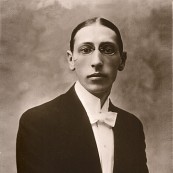
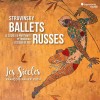
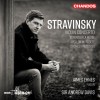
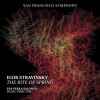
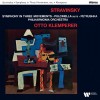
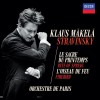
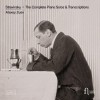
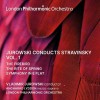
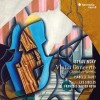
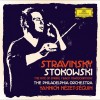
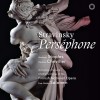
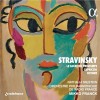
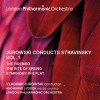


![Russian legends - David Oistrakh [20 CD]](http://static.classicalm.com/repository/collection-cover/small/267-img1318418713553266.jpg)
![Russian legends - Gidon Kremer [10 CD]](http://static.classicalm.com/repository/collection-cover/small/273-img1318873589669975.jpg)
![Russian legends - Mstislav Rostropovich [10 CD]](http://static.classicalm.com/repository/collection-cover/small/275-img1319023256353734.jpg)
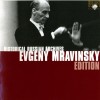
![Steinway Legends - Maurizio Pollini [2 CD]](http://static.classicalm.com/repository/collection-cover/small/239-img1316863332613202.jpg)
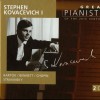
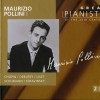
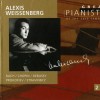
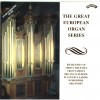
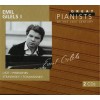
![Great European Organs. 02-Keith John [L'eglise du Chant d'Oiseau Brussels]](http://static.classicalm.com/repository/collection-cover/small/843-img1340483690667549.jpg)
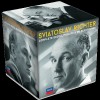
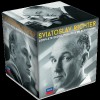
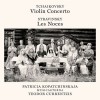
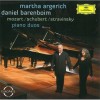
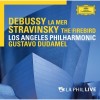
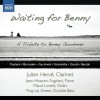
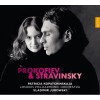
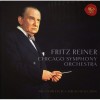
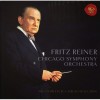
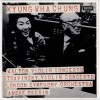
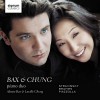
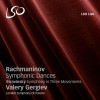
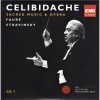
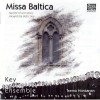
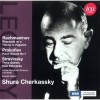
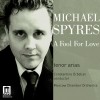
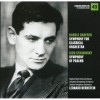
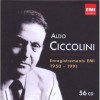
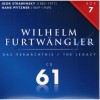
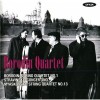
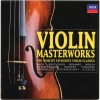
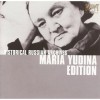
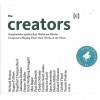
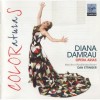
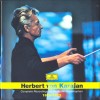
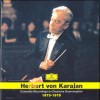
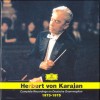
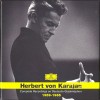
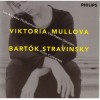
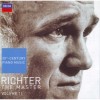
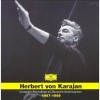
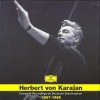
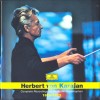
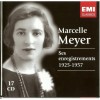
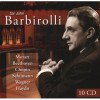
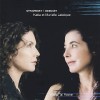
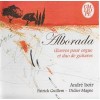
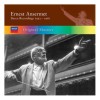
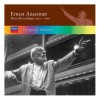
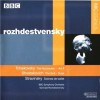
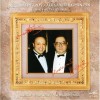
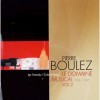
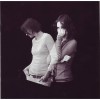
![Rafael Kubelik Rare Recordings 1963-1974 [CD5of8]](http://static.classicalm.com/repository/disk-cover/small/3598-img1404743379219477.jpg)
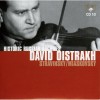
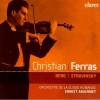
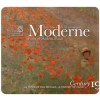
![Anthology of the Royal Concertgebouw Orchestra: Live the Radio Recordings 1960-1970 [CD2]](http://static.classicalm.com/repository/disk-cover/small/3439-img1395217912634009.jpg)
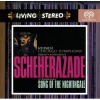
![Anthology of the Royal Concertgebouw Orchestra: Live the Radio Recordings 1960-1970 [CD14]](http://static.classicalm.com/repository/disk-cover/small/3451-img1395226962599147.jpg)
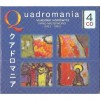
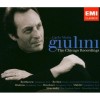
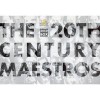
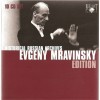
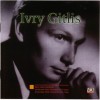
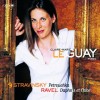
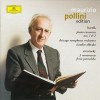
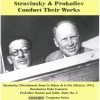
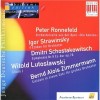
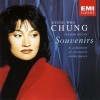
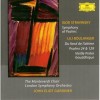
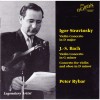
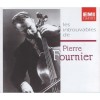
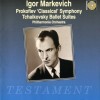
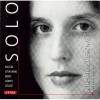
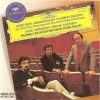
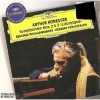
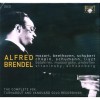
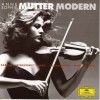
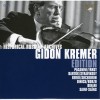
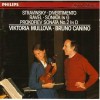
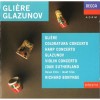
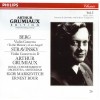
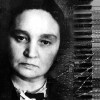
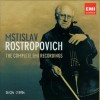
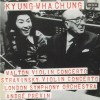
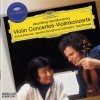
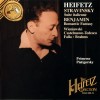
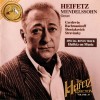
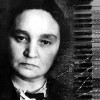
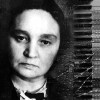
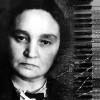
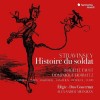
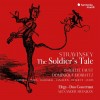
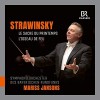
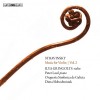
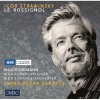
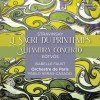
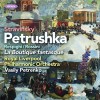
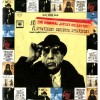
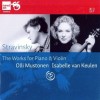
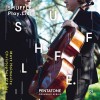
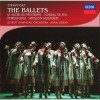
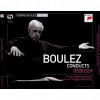

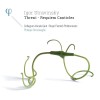
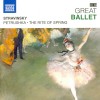
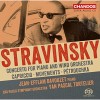
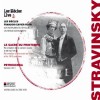
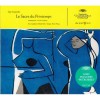
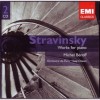
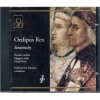
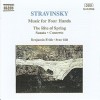

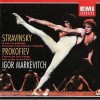
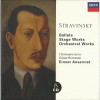
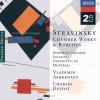
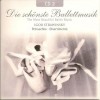
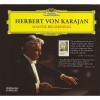
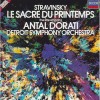
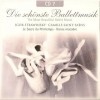
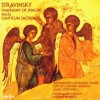
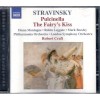
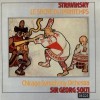
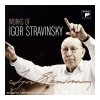
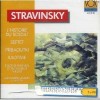
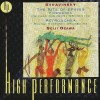
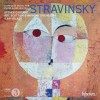
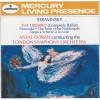
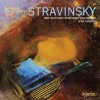
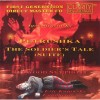
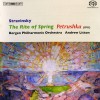
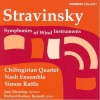
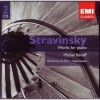
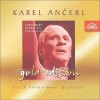
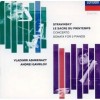
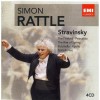
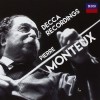
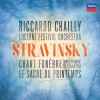
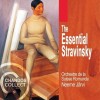
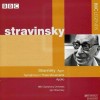
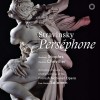
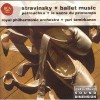
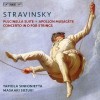
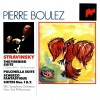
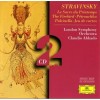
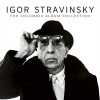
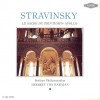
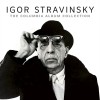
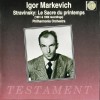
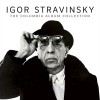
![Stravinsky - Le sacre du printemps [Esa-Pekka Salonen]](http://static.classicalm.com/repository/composition-cover/small/19851-img1402574078408872.jpg)
